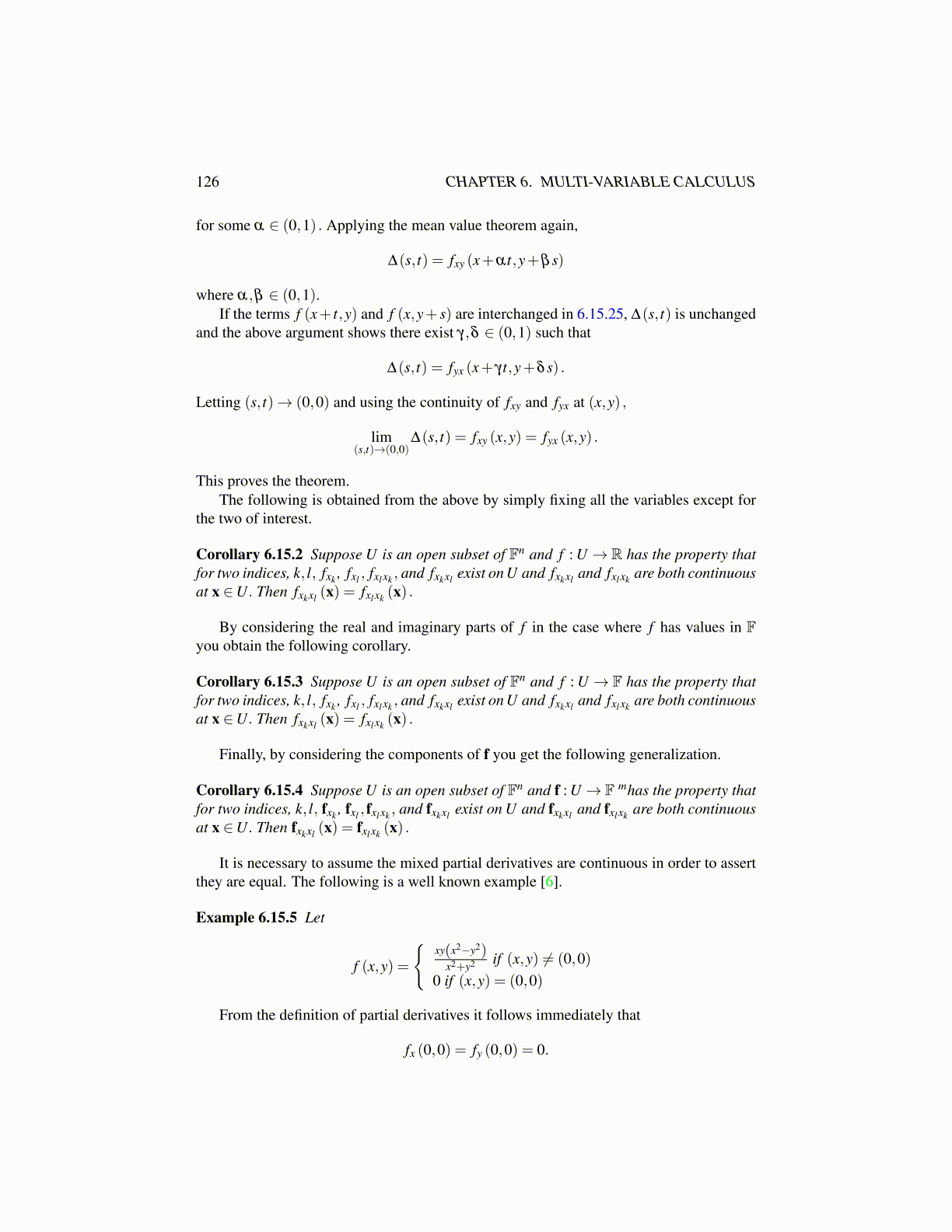
126 CHAPTER 6. MULTI-VARIABLE CALCULUS
for some α ∈ (0,1) . Applying the mean value theorem again,
∆(s, t) = fxy (x+αt,y+β s)
where α,β ∈ (0,1).If the terms f (x+ t,y) and f (x,y+ s) are interchanged in 6.15.25, ∆(s, t) is unchanged
and the above argument shows there exist γ,δ ∈ (0,1) such that
∆(s, t) = fyx (x+ γt,y+δ s) .
Letting (s, t)→ (0,0) and using the continuity of fxy and fyx at (x,y) ,
lim(s,t)→(0,0)
∆(s, t) = fxy (x,y) = fyx (x,y) .
This proves the theorem.The following is obtained from the above by simply fixing all the variables except for
the two of interest.
Corollary 6.15.2 Suppose U is an open subset of Fn and f : U → R has the property thatfor two indices, k, l, fxk , fxl , fxlxk , and fxkxl exist on U and fxkxl and fxlxk are both continuousat x ∈U. Then fxkxl (x) = fxlxk (x) .
By considering the real and imaginary parts of f in the case where f has values in Fyou obtain the following corollary.
Corollary 6.15.3 Suppose U is an open subset of Fn and f : U → F has the property thatfor two indices, k, l, fxk , fxl , fxlxk , and fxkxl exist on U and fxkxl and fxlxk are both continuousat x ∈U. Then fxkxl (x) = fxlxk (x) .
Finally, by considering the components of f you get the following generalization.
Corollary 6.15.4 Suppose U is an open subset of Fn and f : U → F mhas the property thatfor two indices, k, l, fxk , fxl , fxlxk , and fxkxl exist on U and fxkxl and fxlxk are both continuousat x ∈U. Then fxkxl (x) = fxlxk (x) .
It is necessary to assume the mixed partial derivatives are continuous in order to assertthey are equal. The following is a well known example [6].
Example 6.15.5 Let
f (x,y) =
{xy(x2−y2)
x2+y2 if (x,y) ̸= (0,0)0 if (x,y) = (0,0)
From the definition of partial derivatives it follows immediately that
fx (0,0) = fy (0,0) = 0.